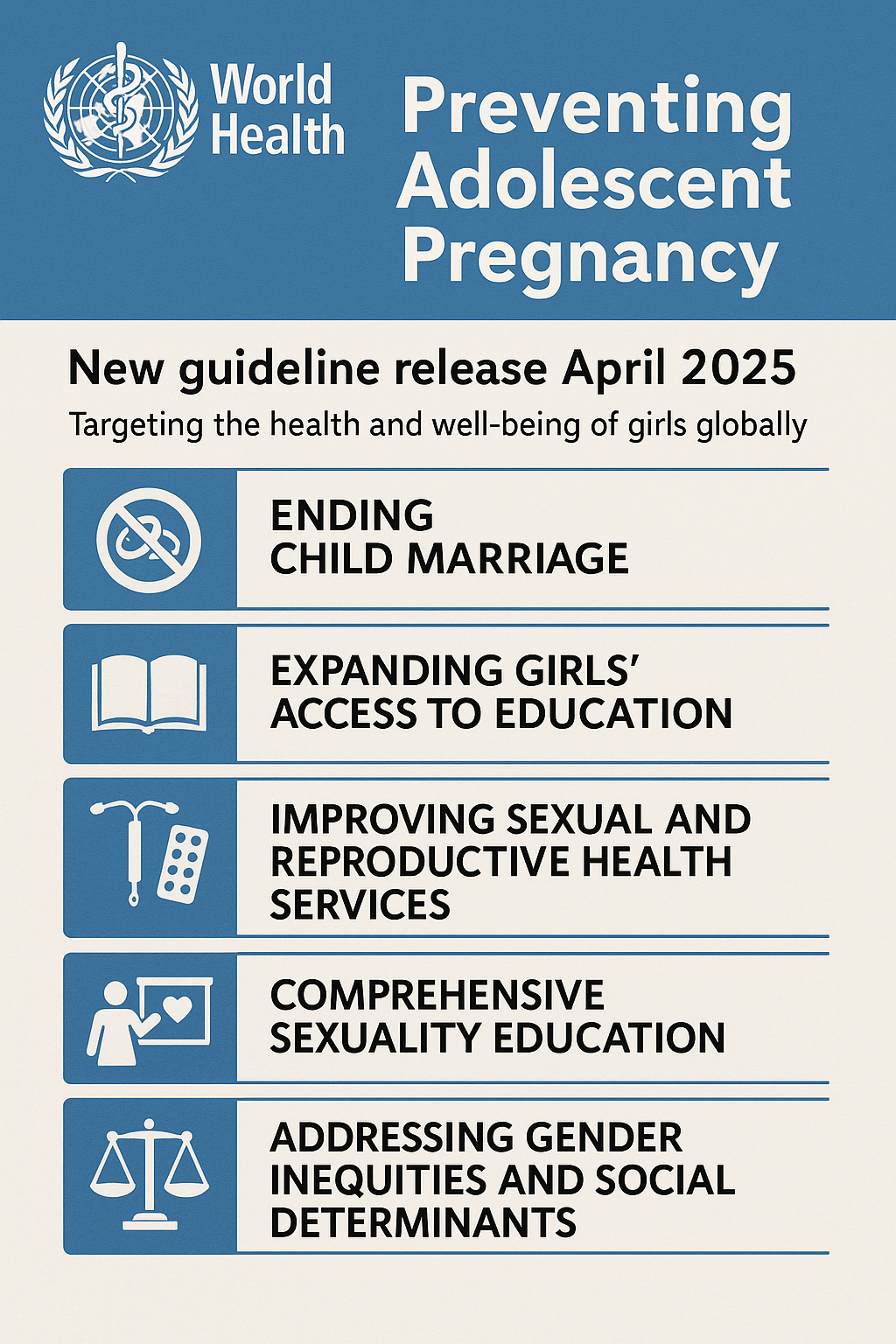Written By Yvonne Misando.
The World Health Organization (WHO) has developed a new guideline release for April 2025 that targets preventing adolescent pregnancies and the health and well-being of girls across the globe. This develops as there have been continued concerns about early pregnancies and their health and social implications, particularly across low- and middle-income countries.
Adolescent pregnancy is one of the most serious global health issues. Every year, over 21 million girls aged between 15 and 19 become pregnant in low- and middle-income countries, and just over 12 million of these pregnancies produce a birth. Essentially, about half of these pregnancies are unintended, and in 2019, 55% of unintended adolescent pregnancies ended in abortions, many of which are unsafe due to the limited resources involved.
Early pregnancy should be the primary cause of death among adolescent girls aged between 15 and 19, along with the other complications like eclampsia, infections, and unsafe abortions, with global statistics reporting that it accounts for more than 50% of deaths in this younger group. Babies resulting from adolescent mothers are at a higher risk of having low birth weights, suffering from preterm births, and facing serious neonatal conditions. Adolescent birth rates in sub-Saharan Africa remain above global averages by more than double, with countries such as Niger, Mozambique, and Mali recording a rate of over 150 births per 1,000 girls aged 15 to 19.
This guideline now updates the WHO guideline for definite multifaceted solutions based on evidence in its provisions for prevention and supporting adolescent girls:
Ending Child Marriage: Adolescent pregnancy is strongly associated with child marriage. In fact, in low- and middle-income countries, about 90% of adolescent births occur to girls married before the age of 18 years. It is recommended that laws should prohibit marriage under 18 years, consistent with human rights standards, and that the community should be engaged in preventing the practice.
Expanding Girls’ Access to Education: Education itself is a strong protective factor. If all girls completed secondary education, it is projected that two-thirds of these marriages would cease. Recommended incentives, such as financial stipends or scholarships, to combat child marriage for at-risk girls are in the guidelines.
Improving Sexual and Reproductive Health Services: There are several barriers to accessing contraceptive and reproductive health care for adolescents, on account of laws demanding either parental consent or notification. The guideline opposes such laws and urges for the provision of adolescent-responsive services with contraceptive options and safe abortion care.
Comprehensive Sexuality Education: Evidence suggests that sexuality education delays the initiation of sexual activity, reduces early pregnancies, and provides knowledge of reproductive health. The guideline emphasizes that both boys and girls must be given factual, age-appropriate information.
Addressing Gender Inequities and Social Determinants: Various factors, including poverty and low opportunity, are conducive to gender-based violence and cause early pregnancies. Hence, the guidelines state that holistic interventions must empower girls to deal with the causes.
In 2021, 1 in 25 adolescent girls all over the world were giving birth before reaching 20 years old, which is much improved from 1 in 15 two decades back, although disparity remains.
In some countries, almost 10% of girls from age 15 to 19 give birth in any given year.
As of 2023, in Sub-Saharan Africa and Latin America and the Caribbean, the adolescent birth rate was the highest: 97.9 and 51.4 births from 1,000 girls aged 15-19, respectively.Countries like Niger report rates as high as 203.6 births per 1,000 girls aged 15-19, with 76.3% of girls married before age 19 and 34.4% of deaths among girls under 19 linked to early pregnancies.
Early pregnancies disrupt the education of girls, impede future employment opportunities, and create destructive circles of poverty. In terms of health risks, the problems are severe; adolescent mothers have complications at higher rates, and their children are at a greater risk for adverse outcomes. Early marriage and pregnancy do not socially allow girls to enjoy childhood and autonomy.
Newly revised WHO guidelines call for immediate evidence-based coordinated action to avert adolescent pregnancies and promote health in girls. Through preventing child marriage, enhancing education, ensuring health service access, and promoting gender equality, countries can make strides towards breaking the early pregnancy cycle and investing in future generations of girls.

